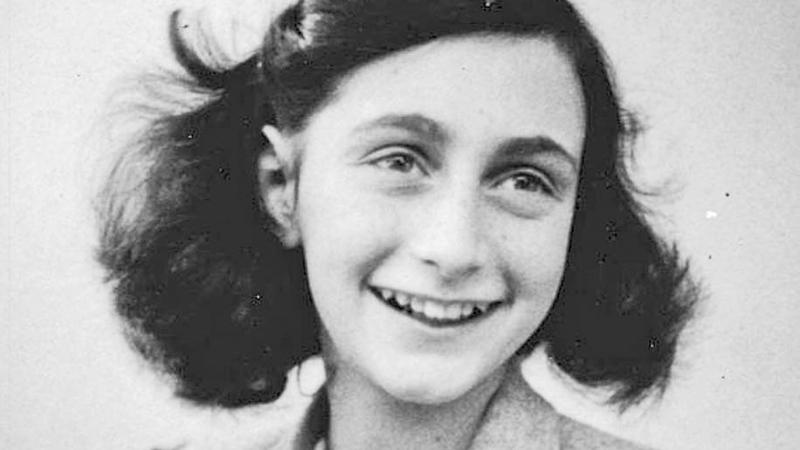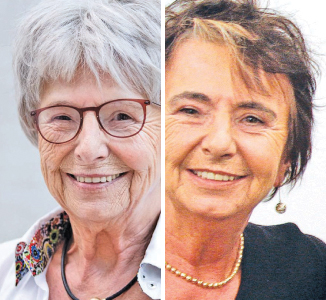
Title - The Story of Anne Frank
Author - Mirjam Pressler
Translator – Anthea Bell
Publisher – Macmillan Children’s Books
Pages – 192
Young Jewish Holocaust victim Anne Frank is a household name in Sri Lanka as her life story and her poignant diary have become a frequent subject for newspapers, and several books on her life along with her diary have also been sold in thousands along with her diary’s Sinhala translations. As such, ‘The Story of Anne Frank’ by Mirjam Pressler is also a welcome book for them, though published more than two decades back.
The difference of this book is it gives new insights into Anne’s early life and relationships, the development of the Diary, the privations and logistics of life in hiding... her tragic death in typhus-ridden Bergen-Belsen, while introducing the real girl behind the famous diary.
Content
 The book includes 17 chapters aside from a foreword by Rabbi Hugo Gryn; a note from Eva Schloss, trustee of the Anne Frank Educational Trust UK; an author’s note and a postscript. Very simply and clearly, they add up additional knowledge to the facts that we already know about the characters and incidents in the diary. See some of the titles of the chapters: The Liberation, The Diaries, Anne Frank Writer, The Story of the Frank Family, The Netherlands and the Jews, Before Going into Hiding, The Secret Annexe, Magot and Peter. These suggest how each chapter provides necessary information in a simple way.
The book includes 17 chapters aside from a foreword by Rabbi Hugo Gryn; a note from Eva Schloss, trustee of the Anne Frank Educational Trust UK; an author’s note and a postscript. Very simply and clearly, they add up additional knowledge to the facts that we already know about the characters and incidents in the diary. See some of the titles of the chapters: The Liberation, The Diaries, Anne Frank Writer, The Story of the Frank Family, The Netherlands and the Jews, Before Going into Hiding, The Secret Annexe, Magot and Peter. These suggest how each chapter provides necessary information in a simple way.
The day of liberation
The Liberation, the first chapter of the book, describes the condition of the Auschwitz concentration camp and Anne’s father Otto Frank’s state when they were liberated by the Soviet Army. The Auschwitz where Otto Frank’s wife Edith Frank was also interned and gassed, was liberated on January 27, 1945. Following is how the book explains the situation:
“On the night of 26 January, a loud explosion broke the silence. The SS had blown up Crematorium V to destroy all evidence of what had been going on. Around two o’clock next afternoon, two muffled figures came trudging down the road through the camp in the snow, pulling a machine-gun on a sleigh behind them. On their fur caps were red stars of the Soviet Army. The concentration camp of Auschwitz, whose name was to become a synonym for mass murder and inhumanity, had ceased to exist.” (Page 4)
It further elaborates: “On the evening of that day, 27 January 1945, hundreds of military vehicles drove into the camp. The Soviet Army freed the sick and exhausted prisoners still there. One Russian officer, speaking in Yiddish, promised that everything possible would be done to provide them with food and give the sick the care they needed. The next day the prisoners had soup with pieces of meat in it; they could hardly even remember what meat tasted like. Doctors and nurses came into the camp too. Despite their efforts, thousands who had survived the camp itself died from the effects of their imprisonment in the period just after liberation.” (Page 5)
The author hasn’t firsthand knowledge about the concentration camp experiences, but as she is an expert on Frank’s life and writings, she could offer those facts authentically and simply.
‘Armchair murder’
 When explaining the deaths of Anne and Margot in Bergen-Belsen concentration camp, generally they are described as the word ‘perished’. But is it correct to say it as ‘perished’? The author explains this as well:
When explaining the deaths of Anne and Margot in Bergen-Belsen concentration camp, generally they are described as the word ‘perished’. But is it correct to say it as ‘perished’? The author explains this as well:
“The word usually used at the time was ‘perished’ – in German umgekommen – but Anne and Margot were without doubt murdered, although they died of exhaustion and typhus and no one actually shot them with his own hands or forced them into a gas chamber. Unfortunately, there is no good term to describe the creation of conditions in which the death of human beings is not just allowed but deliberately intended. The non-existent phrase should be something like ‘armchair murder’.” (Page 12)
The Diary editions
The original Dutch edition of the diary of Anne Frank is titled the ‘Het Achterhuis’ (‘The Annexe’). However, after that a few editions of it were published. The second chapter, The Diaries, explains how each edition or version was launched. Otto Franks views on his edition are compiled as below:
“…. Otto Frank saw the diary more as a record of its time than as a young girl’s personal and sometimes very intimate description of her own life, and consequently what he most wanted was for a large circle of friends to be able to read the ‘essentials’ of his daughter’s writings. That was why he made the transcript, which he then asked an acquaintance to check through and correct. A friend urged Otto Frank to publish the diary. However, it was not so easy to put this idea into practice and for some time he could not find a publisher.” (Page 23)
What made her a writer
Anne always wanted to become a writer. Needless to say what type of writer she would have become if she had survived the war. But what elements in her sparked to write the things around her in such a creative way?
“She created nature inside her head, a little moonlight now and then aroused her romantic feelings – and what really made her a writer was this ability to create wide-ranging emotions out of relatively small incidents and then describe them.” (Page 35)
Anne Frank spent almost three years at the hiding place. But how much was she developed as a girl during that time? The chapter 15, Anne’s Development in Hiding, answers this question:
“She had, of course, developed mentally and intellectually as well as physically during her time in hiding. The extreme situation in which she found herself meant more than the restriction of her movements; it also represented a challenge to a young girl firmly determined not to resign herself to her fate. In a sense the situation gave Anne a chance to get to know herself.” (Page 150)
Anne’s religion
When reading Anne’s diary, one can question what religion Anne observed? Or was she a secularist? The author Pressler answers this as well:
“Hanneli Goslar, Anne’s childhood friend, tells us that ‘Mrs Frank and Margot sometimes went to synagogue, Anne and her father not so often.’ And sometimes we are told that ‘she (Anne) took after her father more and was not at all religious.’” (Pages 152-153)
Pressler further comments on this in the book.
Why Otto Frank didn’t publish whole diary
In terms of the diary, one can ask why Otto Frank did not publish all the pages of Anne’s diary. The reason was his desire to protect his wife Edith Frank from Anne’s harsh criticism of her which encapsulated the diary:
“From all accounts Otto Frank was a cultivated and reserved man, and it is very easy to understand why he wanted to protect his wife from Anne’s unjustified attack, even after the event. Edith Frank too had been murdered. No doubt he also felt a certain loyalty to the other people who had hidden in the secret annexe.” (178)
Pressler further describes:
“All his life he refused to have a complete edition of the diary published, although he must have known that there would be such an edition after his death, and he probably wanted to keep these particularly compromising lines of Anne’s away from public view entirely. Then why not simply burn them? I think that would have been going too far for him; he would have felt he was doing his daughter an inquiry.” (Page 178)
In this way, ‘The Story of Anne Frank’ by Mirjam Pressler gives fascinating insights on Anne Frank and her extraordinary diary.
